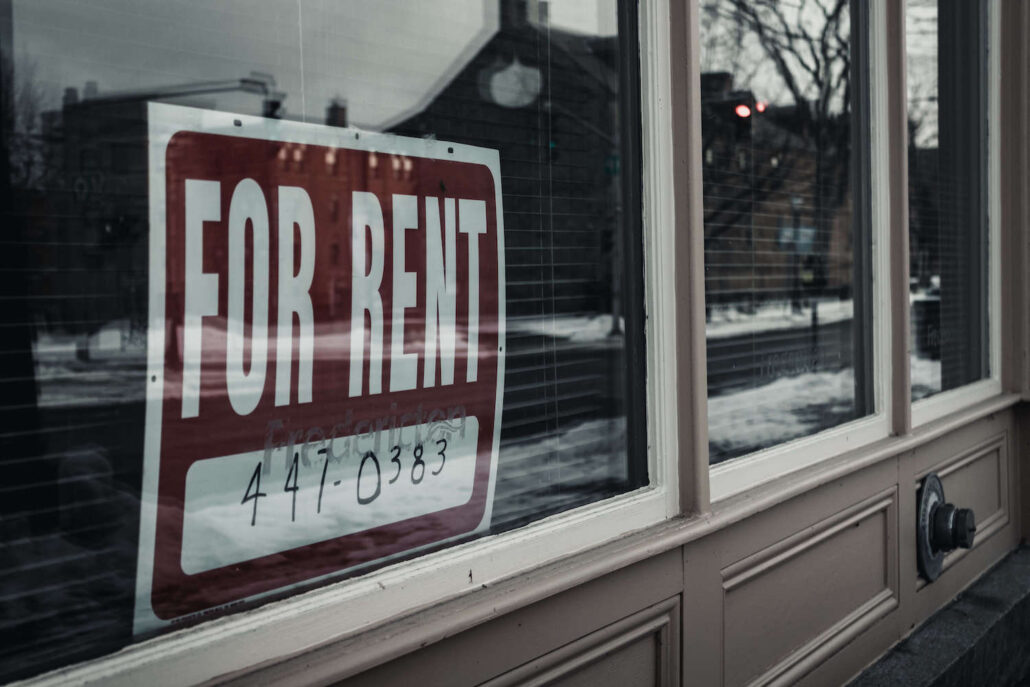One common question we get from clients is: How much should I be spending on housing?
A quick Google search will take you to the 30% rule, which is the most widely accepted (yet debated) rule of thumb. The 30% rule suggests that you should limit your housing costs to no more than 30% of your take-home income. If you spend any more than 30% of your income on housing, you’re considered “rent-burdened.” Spend more than 50%, and you’re considered “extremely rent-burdened.”
Theoretically, I could end the post right here. It’s an easy enough formula to follow, right?
But, as with many financial rules of thumb, the answers to the question of how much should you spend on housing are nuanced. Your housing situation, along with your income, can change over the years. Adhering to the 30% rule may not always be possible or the best thing for your situation.
So, how much should you spend on housing? We approach this question with two main goals in mind: maintaining your ability to save and avoiding lifestyle creep.
Maintain Your Ability to Save
If you consider one thing in your housing costs, let it be this: Can you still save money over the long-term?
I say long-term because life events don’t always line up. Maybe you got a new job that requires you to move to a new city and you need to stretch your housing costs at first; you make this choice against the “rule” because you know that your wages will grow, and the proportion of your income will be around 30% in the near future. In another scenario, maybe you’ve had a change in a roommate situation, and you’re left footing a larger rent bill. In this case, life chose for you and you won’t be able to meet that 30% — unless you decrease your spending, perhaps extensively. But before you do something drastic with your budget just to save money, ask yourself, “Is it worth it? Is it sustainable? Is it the best thing for my situation right now?”
This is where holistic financial planning helps you make the best decision for your situation. If you’re focused on adhering to a rule, you’ll overlook your needs and values. If you put your needs first, and check in with your values, you’ll make a decision that takes into account your mental, emotional, and physical well-being. Having a comfortable roof over your head, for example, is worth more than that 30% target.
The key to the income-to-housing dilemma is making sure that, over the long-run, you can still save at least 10%-20% of your income; that can include an employer-sponsored retirement account or your own long-term savings.
At this point, you, the homeowner, might be saying, “My mortgage payments build equity in the home, so they’re basically the same thing as savings, right?”
Yes, but those savings are illiquid, meaning you can’t access them easily. Aside from a HELOC (home equity line of credit), which you need to pay back, you can only access those savings by selling the house.
Read More: The Ultimate Savings Vehicle: Your Home
If you’re thinking about buying a home, consider carrying no more mortgage than 3x your annual income. This will make sure the carrying costs of the home are less than one-third of your income. If you’re not the only one paying for the mortgage, apply that same rule of 3x your annual income to your share of the mortgage burden. You can use this mortgage calculator here to get a sense of what your payments would be.
Whether you rent or own, the 30% rule doesn’t hold true for everyone. Low-income households will find that their housing costs eat a disproportionately large chunk out of their income relative to people with high incomes. Frank Nothaft, chief economist at Freddie Mac, pointed this out in a Business Week article, saying that people with incomes of $500k a year could put as much as 40% towards housing and still have money left, while low-income households are likely having a hard time making ends meet even if they’re limiting housing costs to 30%.
When we work with clients on their financial plan, we pay special attention to the fixed housing expenses. We put all housing costs together in one line item on the spending plan so that we can see how much of overall spending it comprises. We simply want to make sure that housing costs are not inhibiting people from achieving other financial goals, like saving for retirement. And it’s not just the ability to save for the future. We wonder, do you also have the flexibility in your cash flow so that you can live the life you want to have today?

Avoid Lifestyle Creep
As income rises, we find ways to improve our standard of living. The danger here for our long-term financial health is that we quickly grow accustomed to newer and more expensive standards of living. When it comes to upgrading your housing situation, the costs are pretty much fixed.
For renters, lifestyle creep can look like this: You pay $2,000/month on your studio apartment. You find out that you’re getting a raise in a few months, which will give you an extra $1,000/month to spend. So you do some online searching and find a cute 1-bedroom apartment for $3,000/month to move into as soon as your current lease expires.
That renting scenario can be okay if you already have plenty of flexibility to save money and spend it on other things. But if your cash flow is already tight due to your living expenses, it’s best to stay within your means and give yourself some more breathing room before upgrading your housing. Maybe renew your lease at the cheaper apartment and put that extra money towards getting your long-term savings on track first. Then, maybe consider moving when you get your next raise, which will let you both afford a nicer apartment and save money.
For homeowners or prospective homeowners, lifestyle creep can take the form of stretching yourself for the maximum level of mortgage and/or pouring money into home upgrades. Consider again the suggestion that a mortgage burden should be no more than 3x your annual income. And it’s helpful to not think of the home as a pure savings vehicle, because you’ll need to stay in the house for at least 5 to 7 years to see a return on the upfront closing costs. Think of every decision to make an upgrade as spending money on improving your living situation and making your life more enjoyable, rather than as a pure investment in the home. That way you can make sure you’re still able to save in other ways that will offer you more liquidity down the road. Upgrades will likely improve the value of the home, but the rate of return is uncertain, and you’ll have to sell the home to see the benefits.
The Take-away: Stay Flexible
The common thread between maintaining an ability to save and avoiding lifestyle creep is flexibility. You may find yourself in a living situation where the cost of rent or a mortgage is such a large part of your expenses that you have little wiggle room for anything else. That can be okay if it’s for a short amount of time. Otherwise, the most important factor in determining housing costs is whether, after paying the monthly costs, you have the flexibility to put money (ideally 10%-20% of your income) toward long-term savings. And don’t forget: spending money on experiences and things other than the roof over your head is just as important as those savings goals. Make sure you’re taking into account all your needs so you can make the most sustainable decision when it comes to housing.

Brandon Tacconelli is the Director of Client Care at Thinking Big Financial, Inc. Thinking Big is a fee-only financial planning firm in New York City specializing in working with the LGBTQ+ Community.


One Response
Such a helpful article, Thanks for sharing this with us.